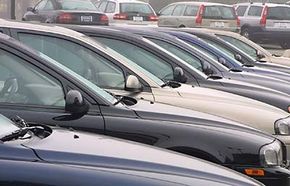Knowing what you want -- or need -- before you start making the rounds of dealerships can save both time and money. It's human nature to go looking for a practical family vehicle like a minivan, but be distracted in the showroom by a flashy sport sedan that costs more. Also, more buyers than ever are climbing out of passenger cars and into light trucks -- sport-utility vehicles, minivans, and pickups. Light trucks now account for 55.5 percent of new vehicle sales. Whatever the model, if emotion drives you to an impulsive purchase, you are likely to pay more and suffer regret later.
While the nation's economic recovery has been sluggish during the past year or two, new vehicle sales remained reasonably strong, topping 16.86 million units in 2004. That was an increase of just 1.5 percent compared to 2003, according to the National Automobile Dealers Association (NADA).
Advertisement
With so many brands and types of vehicles to choose from, consumers have more possibilities than ever. So, automakers have to fight for every sale. Record-high incentives in the form of cut-rate financing and/or cash rebates, which averaged more than $3100 in 2003, certainly helped move the metal. Raj Sundaram, president of the Automobile Lease Guide, predicts average incentives near $3600 in 2005.
Affordability remains a key issue among shoppers, especially since the average cost of a new vehicle reached $28,050 in 2004 (according to NADA). Fortunately, initial price increases for 2005 were largely moderate. Many manufacturers are expected to continue offering tempting incentives on some or all of their models during the months ahead.
Overall vehicle affordability has actually been improving steadily, according to monthly estimates by Comerica Bank. In 2004, the average new vehicle cost $28,050, approximately 22.4 weeks of median family income. On average, new vehicles were more affordable in 2004 than they'd been in the previous 25 years.
Even if cars are more affordable these days, it makes good sense to explore all your options and make informed, practical decisions. In this guide, we’ll arm you with some key survival tips
